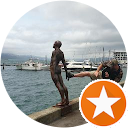- Presentation Training, Public Speaking, Speechwriting
Peek Inside My Public Speaking Toolbox

Every craftsmen knows, you’ll never get the job done unless you have the right tools. Let’s assume you have all the other necessary ingredients: knowledge of your topic, passion, commitment to your audience, a strong message, and solid preparation in terms of organizing your material.
What else do I need for my public speaking success? To reach the next level of powerful communication for more memorable speaking, your must have these tools for public speaking.
Here is a sneak peek inside my speaker’s toolbox collection of components I think are necessary to be an influential speaker. I consider each of them a valuable tool for going beyond the everyday and becoming exceptional in terms of speech performance.
Video camera. You may hate seeing yourself on video; but you still need to make this powerful tool your friend. Seeing yourself the way others do. You’ll also find the before-and-after aspects of your performance to be a confidence-building endeavour! All top platinum speakers record themselves. But Trevor, I don’t have a video camera. Use your mobile phone or tablet. Look at your body language if run the risk of making them planned and mechanical. Use it instead to observe your facial expressions. Audiences gain a wealth of information from what your face and the expression in your eyes are showing. Learn whether your face is sufficiently expressive. If you’re stone-faced when you speak, start to bring facial expressiveness into the act. Learn to smile at certain points.
Audio recorder. Use an app on your laptop mobile phone, or a digital voice recorder. Your voice is the most flexible tool you own for public speaking, and you need to make it a central part of your performance repertoire. Inexpressive voices not only makes audiences fall asleep; they also diminish the impact of important points, which should sound like they matter. In telephone conversations and phone conferences where visuals are absent, your voice is much more critical to your success as a speaker. So remove those visuals yourself and use a voice recorder to improve. This is really an important tool to use to help you with expression. I still do this frequently to hear if my passion and emotion can be felt with my voice.
Straight-backed chair. Some of the important conversations and presentations you’ll be involved in will take place while you’re sitting. The elements of body language and non-verbal communication are not any less important in these situations. Practice sitting up straight, with your backside off the back of the chair. Place your hands on the table, one on each side of your notes or handouts (don’t place your hands in your lap or clasp them so that they form a barrier). Lean 5 degrees forward to show you’re interested in the discussion taking place. Learn not to shift around too much in your chair as this is shows you are uncertain of yourself.
Lectern. It’s one of the two public speaking obstacles people stumble over. I call them The Devil’s Tools (the other is PowerPoint). A worthwhile piece of furniture for holding speaking notes or blocking your shaking legs, the lectern is, without doubt, a physical barrier. Come out from behind it occasionally if that’s possible, but at the least avoid grasping the edges with white knuckles. Most importantly, practice backing up a step and gesturing naturally. I sometimes practice in the office by standing behind my chair and placing my notes on the backside of the chair. A tip is to use stiff note cards that are A5 in size.
LCD projector. You need to become familiar with two aspects of LCD projectors: the audio connection if you’re showing anything with sound and the cables involved for visual projection. (If you’re a Mac user, you’ll need adapters for a VGA or HDMI connection.) If you speak a lot, you should own your own projector in case your venue does not have one. And by all means, familiarize yourself with the “Magic B-button” when you’re using PowerPoint.
Hand-held microphone. There may be times when a microphone is necessary, because of the size of the room, and you’ll be handed one just before you begin. That is, not every host organization will have a lectern microphone or lapel microphone. When I coach clients that needs to give speeches, we often practice using a hand-held microphone because that’s what will be provided at the reception. Get an inexpensive model for your toolbox and become comfortable using it. Tip: do a sound test prior to the audience arriving. Also make sure you keep the microphone in front of your mouth while you are speaking and turning. Practice with a microphone.
Water. Your voice box and throat need to be adequately hydrated. If you have speech anxiety, your mouth will dry up like a desert. Get in the habit of sipping water in your practice sessions. You can even use water strategically! When you’re asked that bear of a question and your mind is screaming “How do I answer that,” take a sip of water, which will give you that precious few seconds of thinking time you need. Tip: do not use a bottle with a cap while you are speaking. Rather have a glass of water that is easier that opening a cap every time you want to take a sip.
Silence. Yes, put this in your speaker’s toolbox. You can’t see it although you and everyone else can hear it, but it’s one of your most powerful speaking tools. You need to deploy it for three reasons in particular: (1) to allow the important thing you just said to be absorbed, (2) to build anticipation, and (3) and to keep you speed and pace at 130 words per minute. I’ll let all that sink in for a moment. Tip: Read an article out loud and focus to speak with punctuation. Purposely pause. Use you 2nd tool – audio recorder and listen if you actually pause long enough. Most people say it feels like a life time, but when you listen to yourself you will notice it is only 1 – 2 seconds and you sound better.
Master each tool on your journey to become a powerful public speaker.
Other related articles.
How to captivate your audience
5 Key Business Lessons From Hit Show ‘Bluey’
How to Close More Sales With Social Selling
Leadership Lessons from Obama’s Pivotal Moment
How to Build Buyer Trust – Part 2
Unlocking Sales Success: Harnessing AI to Close More Deals
5 Tips for your next sales discovery calls
5 Cognitive Biases Every Salesperson Should Master
What Made Martin Luther King Jr’s Famous Speech so Powerful?
How to Use Your Hands Effectively When Giving a Speech
Explorer Mike Horn’s Key for Productivity
Trevor Ambrose is an international training and coaching company located in the Gold Coast in Australia. We focus on sales and public speaking training.




























